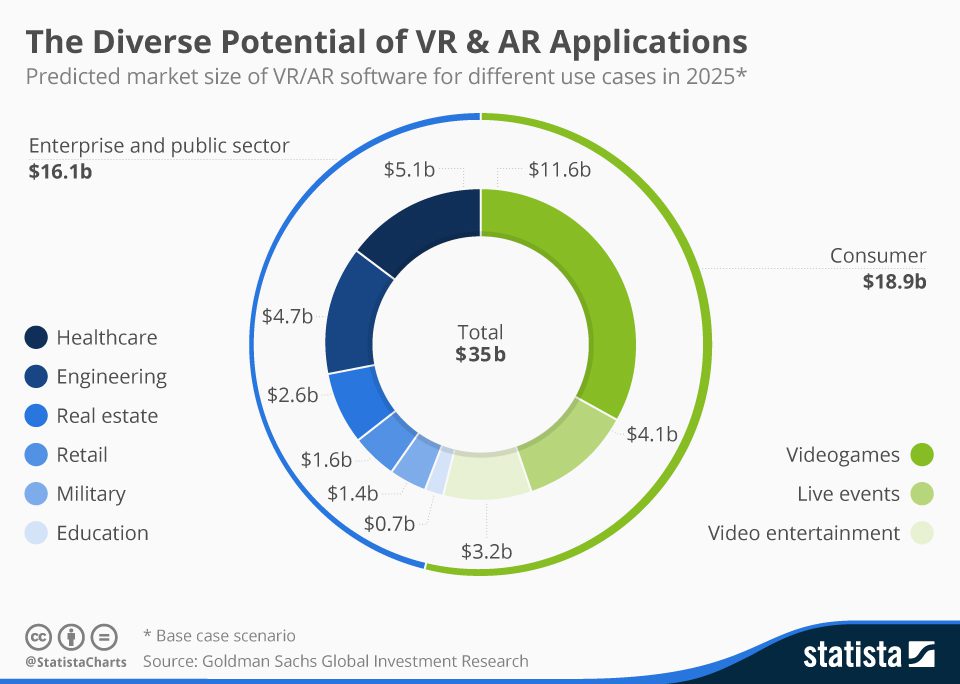Virtual reality technology has been around for decades, but its potential applications are still being explored. From military training to education, from overcoming phobias to improving surgical outcomes, there are many ways in which this technology can be used to our advantage. Architects can use VR to visualize their designs, while product designers can create virtual prototypes. VR therapy is even being used to treat PTSD. This technology has the potential to revolutionize travel and the gaming industry. As VR technology continues to develop, it is exciting to think about the possibilities that lie ahead.
10 Fascinating Facts about Virtual Reality Technology and Its Potential Applications
1. Virtual Reality Technology has Been Around for Decades
Virtual reality technology may seem like a recent invention, but it has actually been around for decades. The first VR headset, called the Sensorama, was invented in 1956 by Morton Heilig. Since then, the technology has continued to advance and has become much more sophisticated.
2. The Military Uses Virtual Reality Technology for Training
The military has been using virtual reality technology for years to train soldiers for combat. VR simulations can help soldiers practice things like firing weapons, handling equipment, and reacting to different scenarios. This technology has helped to improve the effectiveness and safety of military training.
3. Virtual Reality Technology Can Improve Education
Virtual reality technology can be used to create immersive learning environments that are more engaging and interactive than traditional classroom settings. This can be especially useful in subjects like science and history, where students can explore and interact with virtual worlds to better understand complex concepts.
4. Virtual Reality Can Help People Overcome Phobias
Virtual reality technology has been used to help people overcome phobias by exposing them to virtual scenarios that cause anxiety in a controlled environment. This form of therapy has been shown to be effective in treating phobias related to heights, flying, spiders, and other common fears.
5. Virtual Reality Can Help Doctors Train for Surgery
Virtual reality technology can be used to create realistic simulations of surgical procedures, allowing doctors to practice and refine their techniques without using real patients. This can help to improve surgical outcomes and reduce the risk of complications.
6. Virtual Reality Can Help Architects Visualize Designs
Virtual reality technology can help architects and designers to better visualize their creations. By creating virtual models of buildings and landscapes, designers can explore different ideas and make changes in real-time. This can help to streamline the design process and ensure that projects are completed on time and within budget.
7. Virtual Reality Can Improve the Treatment of PTSD
Virtual reality technology has been used to treat veterans suffering from post-traumatic stress disorder (PTSD). By recreating traumatic events in a controlled environment, VR therapy can help patients confront and overcome their fears. This form of therapy has shown promising results and is becoming more widely available.
8. Virtual Reality Can Improve the Gaming Experience
Virtual reality technology has the potential to revolutionize the gaming industry by creating more immersive and realistic games. Players can experience games in a whole new way, with the ability to explore and interact with virtual worlds like never before.
9. Virtual Reality Can Improve Product Design
Virtual reality technology can be used to create virtual prototypes of products, allowing designers to test different designs and configurations without the need for physical models. This can help to improve product design and reduce the time and cost of bringing new products to market.
10. Virtual Reality Could Revolutionize Travel and Tourism
Virtual reality technology has the potential to revolutionize the way we travel and experience different cultures. With VR technology, users can explore virtual replicas of famous landmarks and tourist destinations from around the world. This could make travel more accessible and affordable for people who are unable to physically travel to these locations.
Conclusion
Virtual reality technology has the potential to transform a wide range of industries and improve our daily lives in countless ways. From improving education to revolutionizing the gaming industry, the possibilities are endless. As the technology continues to advance, we can only imagine what amazing new applications will emerge in the future.
